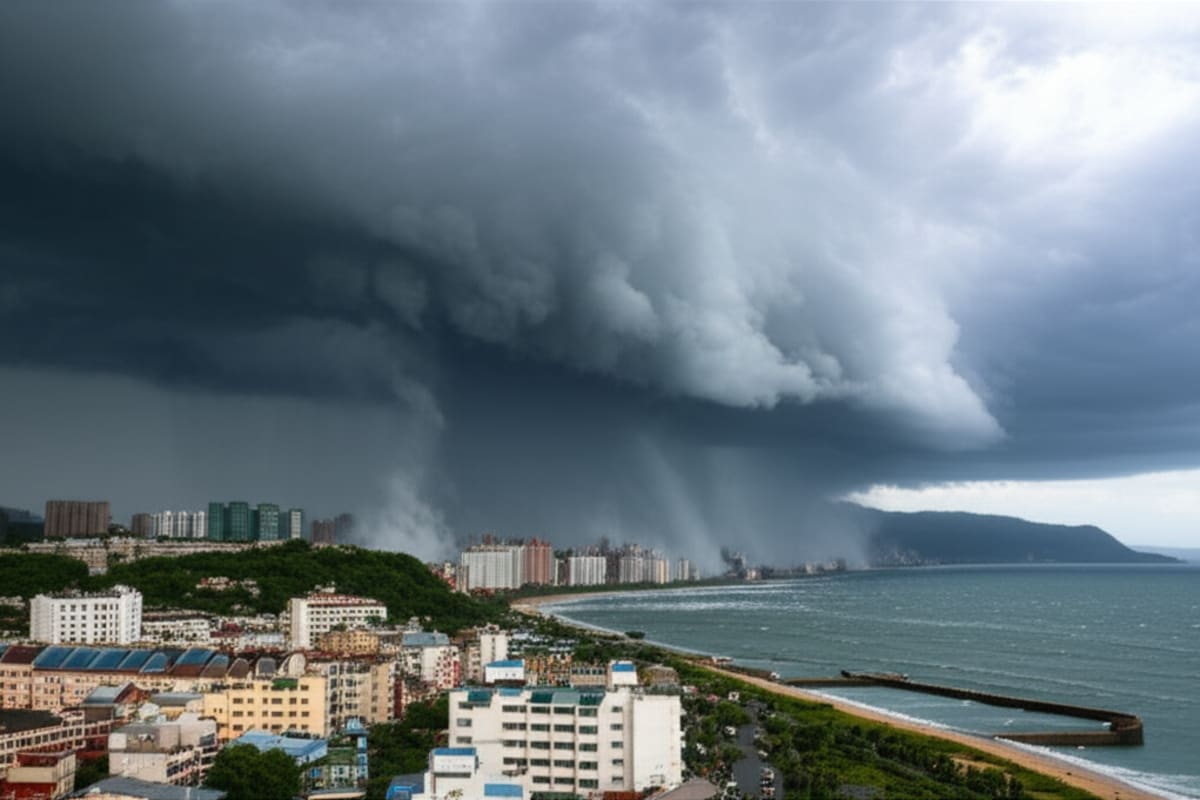Super Typhoon Ragasa: Taiwan Hit, China Braces

Super Typhoon Ragasa, the strongest storm globally in 2025 thus far, has made landfall in Taiwan, unleashing a torrent of destruction and widespread disruption
Background
The super typhoon, packing sustained winds exceeding 185 mph and torrential rainfall, has triggered severe flooding, catastrophic landslides, and widespread power outages across the island nation
Images and videos circulating on social media paint a grim picture of submerged streets, collapsed buildings, and frantic rescue efforts as emergency services struggle to reach those stranded
The full extent of the damage is still being assessed, but initial reports from Taiwanese authorities suggest substantial losses in agriculture, infrastructure, and property. Taiwan: Devastation and Disruption The storm's impact on Taiwan's already strained power grid is particularly concerning, with reports of widespread blackouts impacting millions of homes and businesses. Hospitals and critical infrastructure are relying on backup generators, raising concerns about fuel supplies. The agricultural sector has also suffered a devastating blow, with initial assessments indicating widespread damage to rice paddies, fruit orchards, and vegetable farms, potentially jeopardizing food security.
The Taiwanese government has activated emergency response protocols, mobilizing the military and emergency services for rescue and relief operations across the hardest-hit areas. Shelters have been opened to house displaced residents, and efforts are underway to restore power and clear debris from roadways. Further complicating the recovery effort, many areas are grappling with severely damaged infrastructure, including collapsed bridges and blocked roads, hindering relief efforts and access to isolated communities. Infrastructure Damage and Economic Impact
Beyond the immediate humanitarian crisis, the economic repercussions of Typhoon Ragasa are considerable.
Taiwan's robust technology sector, a key component of the global economy responsible for producing semiconductors and other vital electronic components, faces significant disruptions due to the widespread power outages and damage to manufacturing facilities
Early estimates suggest the economic impact could run into billions of dollars
With the storm now moving west, China: Preparing for Impact the typhoon's trajectory now places coastal regions of mainland China firmly in its path. Millions of residents in southeastern China, including major cities like Xiamen and Guangzhou, are being urged to evacuate as authorities brace for the storm's arrival. Mandatory evacuations are underway in low-lying areas and coastal communities deemed most vulnerable.
The Chinese government has activated its highest-level emergency response protocols, mobilizing the People's Liberation Army and deploying resources for potential rescue and relief efforts. Seaports have been closed, flights have been cancelled, and railway services have been suspended in anticipation of the storm's arrival. The timing of the typhoon presents unique challenges; the autumn agricultural harvests are underway, and crops could be significantly impacted by heavy rains and widespread flooding. Vulnerable Coastal Communities Furthermore, many coastal communities in the region are still recovering from previous typhoons and severe weather events, potentially making them even more vulnerable to the devastating effects of Ragasa. These areas, often densely populated and with limited resources, face disproportionate risks from the typhoon's powerful winds and torrential rainfall.
The Chinese government is working to provide shelter and essential supplies to the most vulnerable populations, recognizing the heightened risks they face during and after the storm
Efforts are focused on reinforcing coastal defenses and ensuring that evacuation routes remain clear
Southeast Asian Implications For Southeast Asia, the implications of Typhoon Ragasa extend beyond its immediate impact on Taiwan and China. The region is acutely aware of the increasing frequency and intensity of extreme weather events, which scientists overwhelmingly attribute to the accelerating impacts of climate change. This serves as a stark and devastating reminder of the vulnerabilities of densely populated coastal areas to the increasingly volatile weather patterns caused by a warming planet.
Countries across the region are increasingly investing in disaster preparedness and climate resilience measures, including improved early warning systems, infrastructure upgrades, and community-based disaster risk reduction programs. However, the scale and intensity of Ragasa underscore the ongoing and significant challenges in mitigating the risks associated with these extreme weather events, particularly for those nations with limited resources to adequately prepare for and effectively recover from such devastating natural disasters. Climate Change and Regional Vulnerability Experts are warning that climate change will continue to drive these trends, leading to more frequent and intense typhoons, cyclones, and other extreme weather events in the coming years. The long-term economic and social costs associated with these events are substantial and require proactive and collaborative efforts from governments, international organizations, and local communities. The potential for cascading effects – such as food shortages, mass displacement, and regional instability – further emphasizes the urgent need for comprehensive and coordinated regional responses.
International Response and Recovery Beyond the immediate humanitarian concerns, there are significant economic consequences to consider following the destructive path of Typhoon Ragasa. Damage to infrastructure, including ports, airports, and transportation networks, will further hinder economic activity and impede recovery efforts. International aid and support will likely be crucial in assisting affected regions in the immediate aftermath of the typhoon and in the longer-term rebuilding process. The storm's intensity, its projected path, and the vulnerability of the impacted populations necessitate a concerted global response to mitigate suffering and expedite recovery efforts.
Conclusion: A Call for Action In conclusion, Typhoon Ragasa's destructive power serves as a potent and tragic reminder of the critical need for proactive disaster preparedness, resilient infrastructure, and robust international collaboration in addressing the escalating and devastating impacts of climate change. The unfolding events will likely trigger renewed and urgent discussions on climate change mitigation and adaptation strategies, not just in East Asia, but globally. The international community must come together swiftly and decisively to support affected communities and to collectively address the root causes of such devastating events, ensuring a more resilient and sustainable future for all.
```